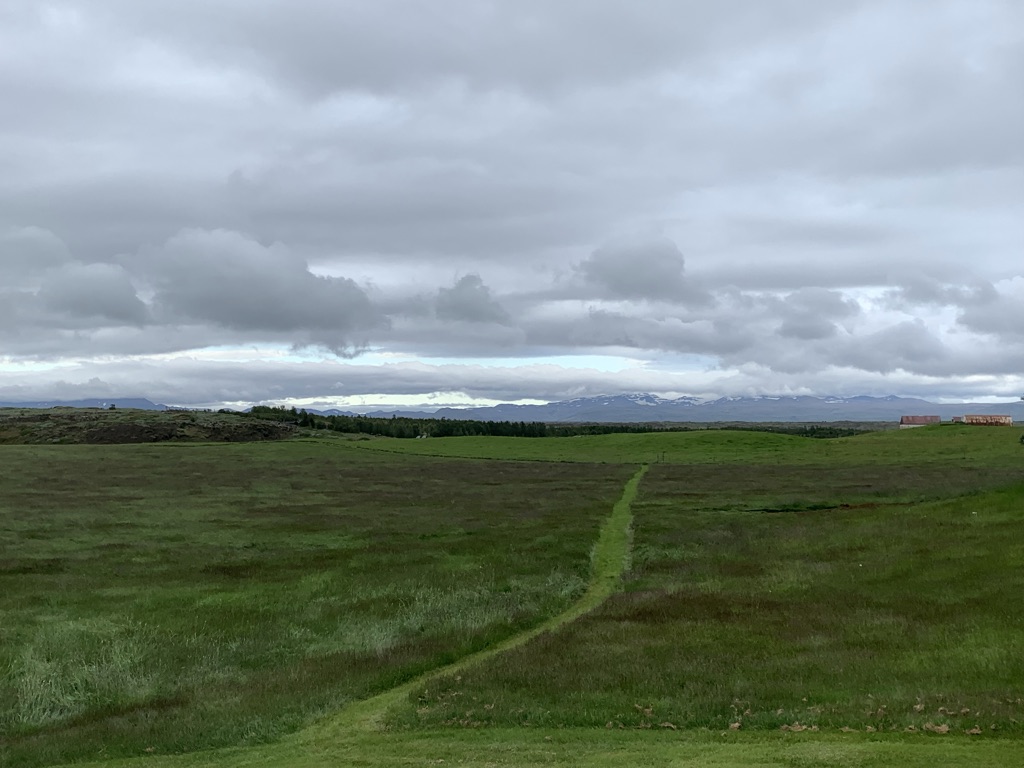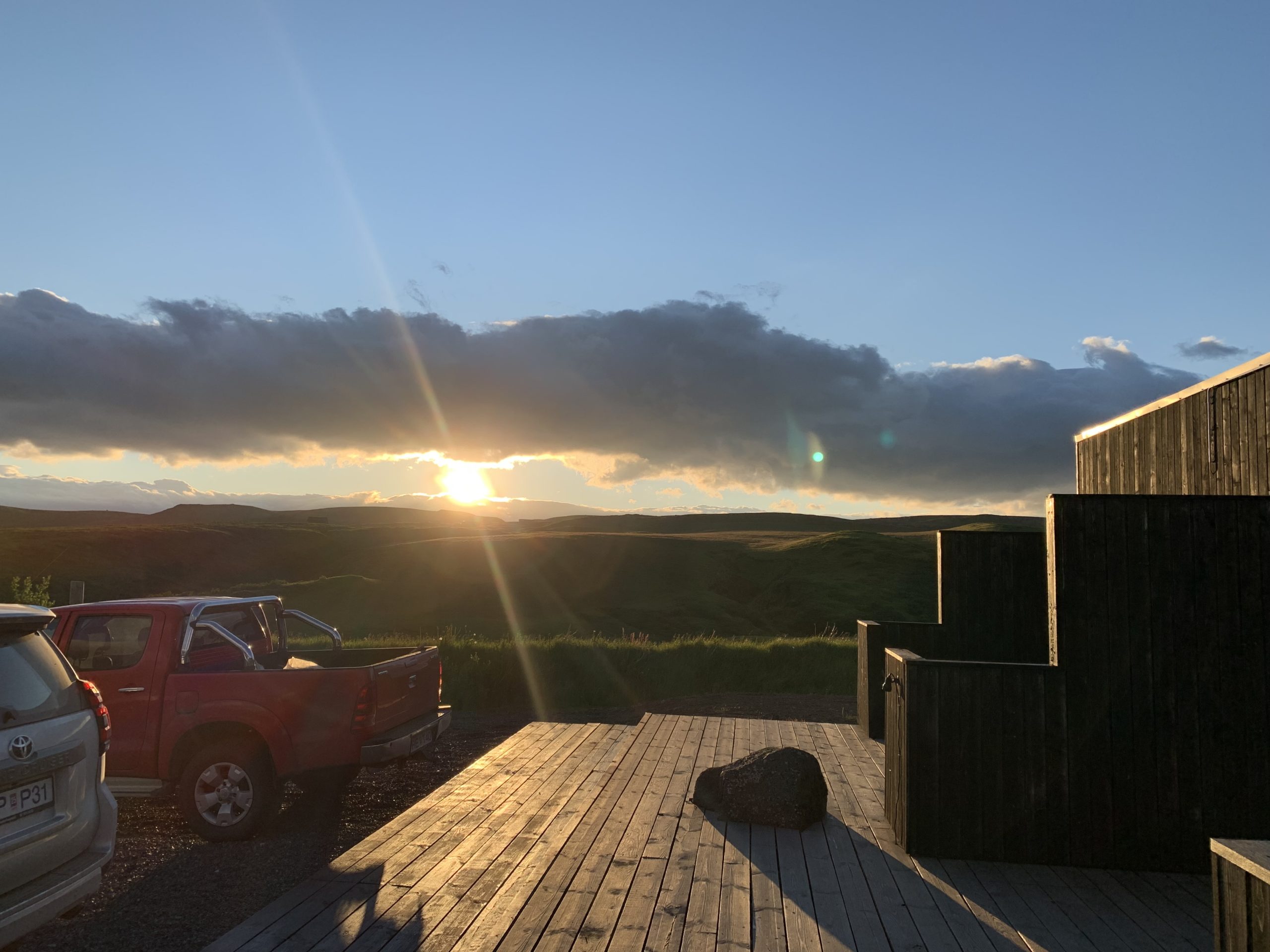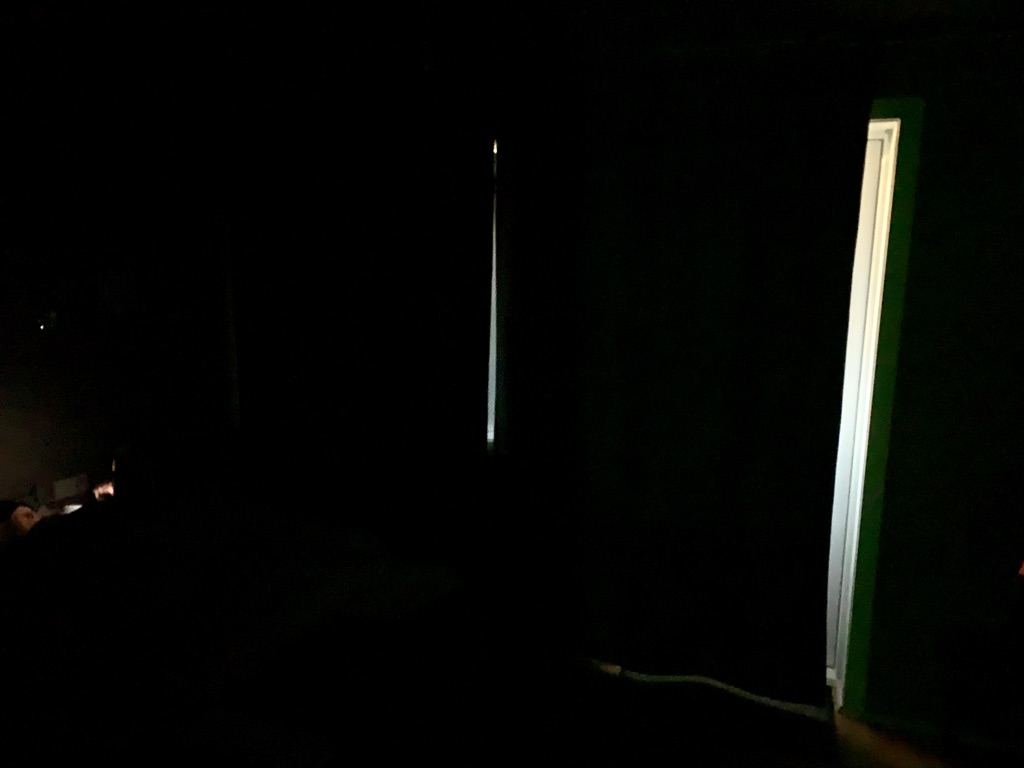One of the biggest challenges people face when traveling is getting a good night’s sleep. There are plenty of reasons it might be hard to drift off when you’re away from home:
- You may not feel safe not being in your own bed (and here’s something you can do to help that)
- The temperature in your room isn’t where you want it (and you can also try to fix that problem yourself)
- The room might be too loud, or too quiet (if that’s the case, check out these apps)
- You may be experiencing jet lag (which you can deal with using these tips)
- The bed may be too hard or too soft (If that’s the case, try to stick to these hotel chains with the best beds)
But during our 2021 trip to Iceland, we discovered another potential sleep disruptor:
The Sun Never Sets (Well, Almost)
While you may know in theory that daylight hours increase the farther north you go, it doesn’t always hit you until you’re lying in bed at 12:30 a.m. and it’s still bright outside.
We weren’t there for the full-on “midnight sun,” but it’s the farthest north we’ve ever traveled—and we definitely noticed a difference. I checked the sunrise and sunset times for Reykjavík during our visit:
- Sunrise: 3:27 AM
- Sunset: 11:36 PM
- Total daylight: 20 hours, 9 minutes
That’s a lot of light, especially when you’re trying to fall asleep and the view out your window looks like this:

Beautiful… But Not Ideal for Sleep
We stayed at a few different places across the country during that trip, and while many online reviews raved about blackout blinds, we weren’t always convinced. We came prepared, just in case.

My wife always packs an eye mask when we travel. I usually don’t need one—unless the sun’s aimed right at my face, like it was during our cabin stay in Tennessee. This time, I followed her lead and brought one, too.
Our accommodations did pretty well with dark curtains, but here’s what the room looked like with the blinds drawn:

Not pitch black, but good enough to help us get some rest.
If you’re planning a trip to Iceland (or anywhere at high latitudes in summer), it’s worth prepping for the long daylight hours. These sleep tips for dealing with constant sunlight are similar to those used to combat jet lag. In addition to a sleep mask, some people also bring portable blackout window covers or white noise machines to help mimic a more familiar sleep setting.
And if you still need help falling asleep—no matter where you are—this method claims you can doze off in two minutes.
Bottom Line
Whether you’re in Iceland, Alaska, Norway, or anywhere else where the sun barely dips below the horizon, sleeping can be a real challenge. But with a bit of planning—think blackout blinds, sleep masks, and a few travel-tested tips—you can still get a good night’s rest, even when it looks like midday at midnight.
So don’t let endless daylight throw off your trip. Prepare ahead, pack smart, and you’ll be snoozing like a pro—even if the sun forgot to set.
Have you ever struggled to sleep in a place where the sun barely sets? Let us know—we’d love to hear how you handled it!
Cover Image by Matty Rogers from Pixabay
Want to comment on this post? Great! Read this first to help ensure it gets approved.
Want to sponsor a post, write something for Your Mileage May Vary, or put ads on our site? Click here for more info.
Like this post? Please share it! We have plenty more just like it and would love it if you decided to hang around and sign up to get emailed notifications of when we post.
Whether you’ve read our articles before or this is the first time you’re stopping by, we’re really glad you’re here and hope you come back to visit again!
This post first appeared on Your Mileage May Vary
